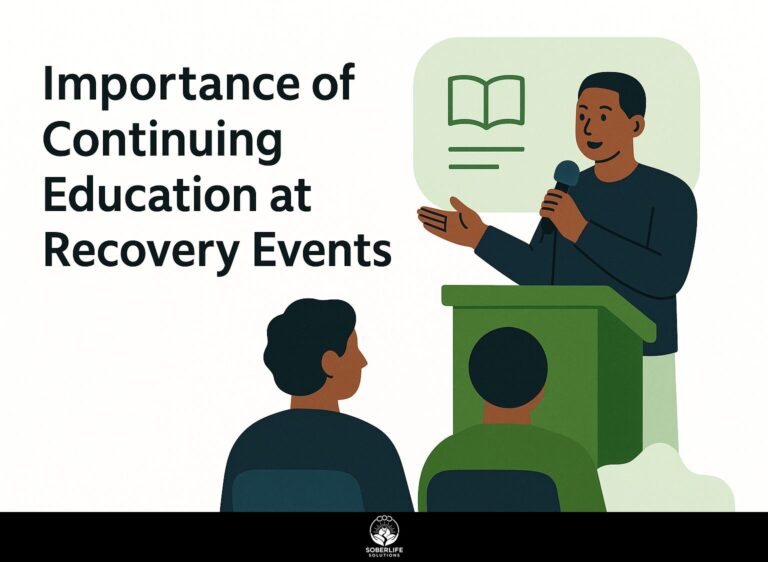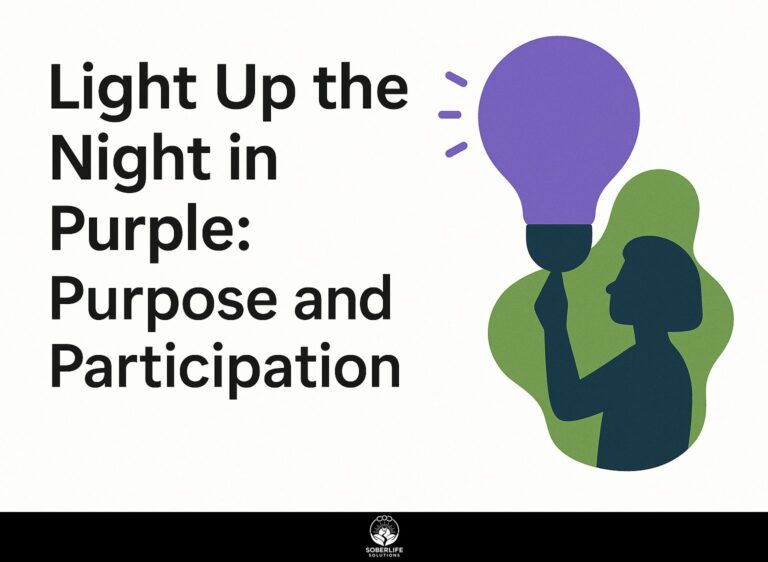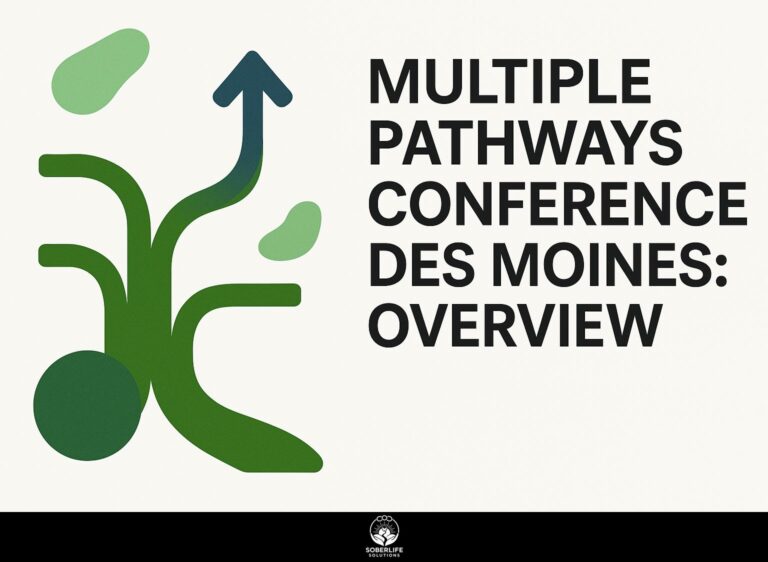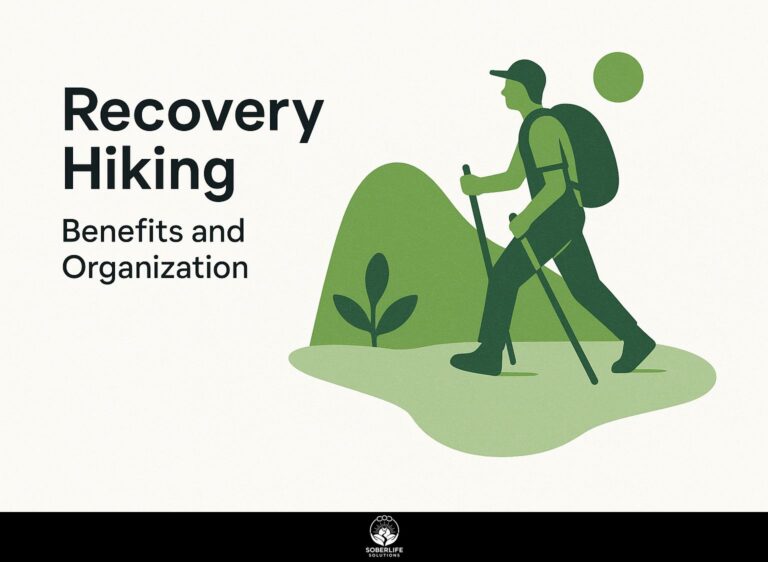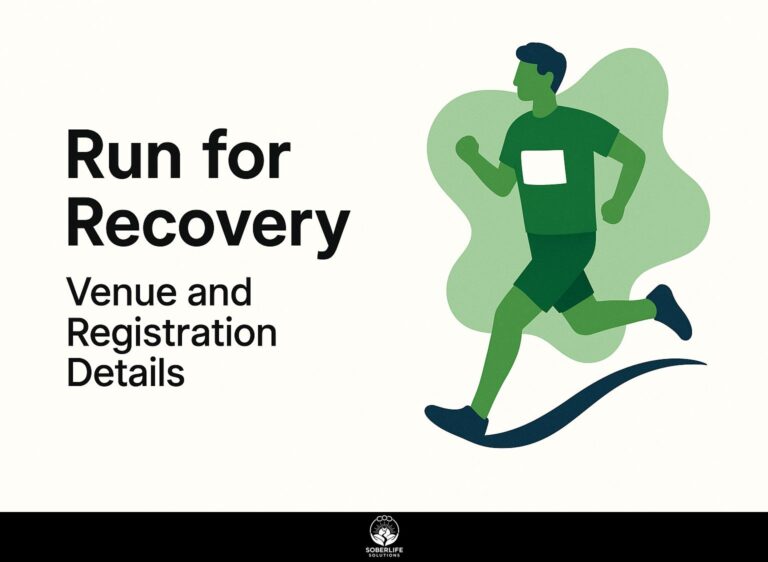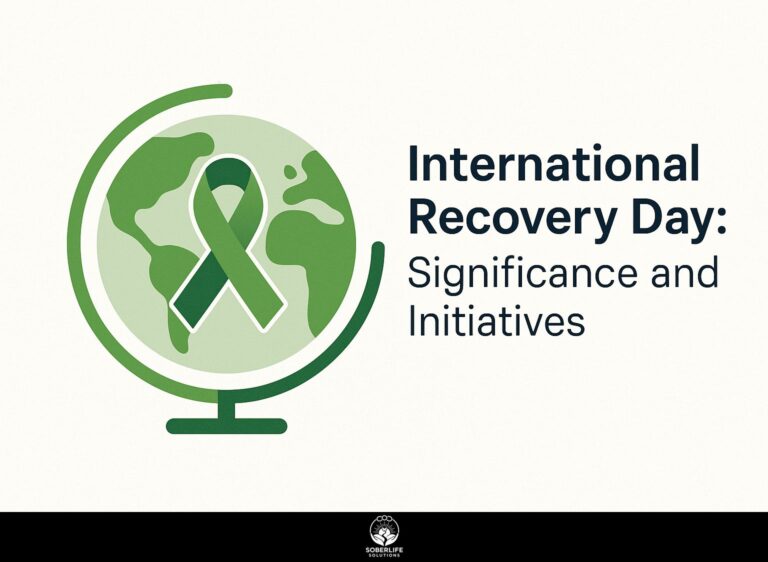Recovery Walks: Purpose, Activities, and Participation
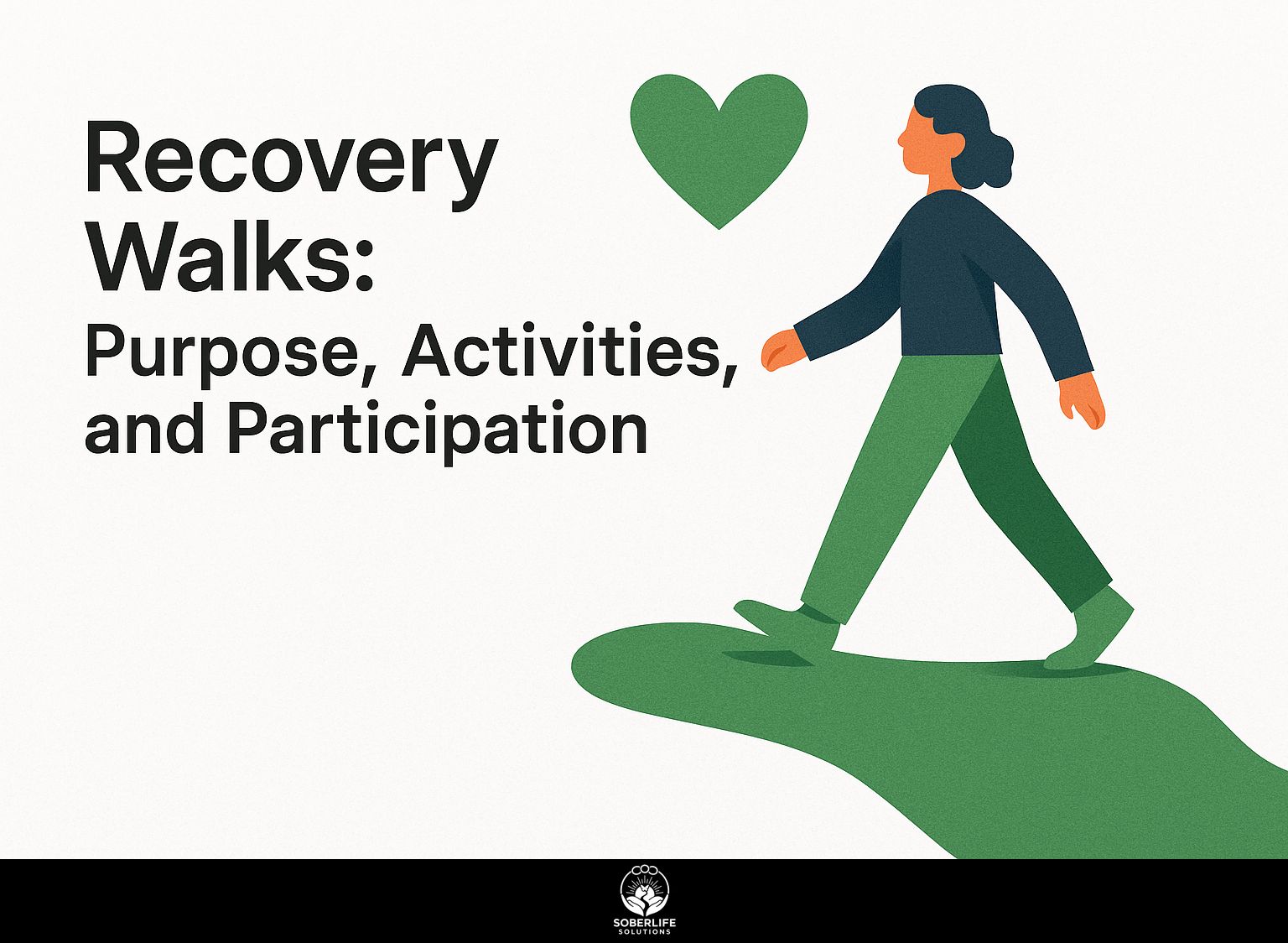
Join the movement this September in Pittsburgh for Recovery Walks, a powerful celebration of resilience and healing during National Recovery Month. These walks raise awareness and build community ties among people affected by addiction. In this article, we’ll look at the goal of Recovery Walks, what activities are included, and how you can join to help and encourage those on their path to recovery.
Key Takeaways:
Definition and Overview
Recovery Walks serve as community gatherings that promote awareness and advocacy for recovery from substance use disorders.
These events focus on celebrating personal progress in recovery, encouraging community support, and informing the public.
Participants share personal stories, helping others learn about the difficulties faced during recovery. Local partners, such as treatment facilities, support groups, and health organizations, collaborate to provide resources and information.
For instance, partnerships with community health centers can facilitate workshops on addiction prevention. Events like Recovery Walks and those held during National Recovery Month show how strong people are and help create a community that is more aware and supportive. The importance of such initiatives is underscored by the findings of the U.S. Department of Health and Human Services, as they highlight the pervasive nature of addiction and substance misuse in their reports.
Historical Context
Since its inception, National Recovery Month has evolved from a small event to a nationwide movement, with Recovery Walks becoming a hallmark of community advocacy.
Initially launched in 1989 as a way to raise awareness about substance use disorders, Recovery Walks gained traction in the early 2000s.
Key milestones include the establishment of organized walks in major cities, which collectively drew thousands of participants. By 2015, over 75 cities across the United States held Recovery Walks, with attendance surpassing 300,000 individuals.
This growth shows that more people see recovery as an important community issue. It helps to remove stigma and encourages a supportive environment, a trend supported by resources from the Centers for Disease Control and Prevention (CDC) as detailed in their National Recovery Month Partner Toolkit.
Purpose of Recovery Walks
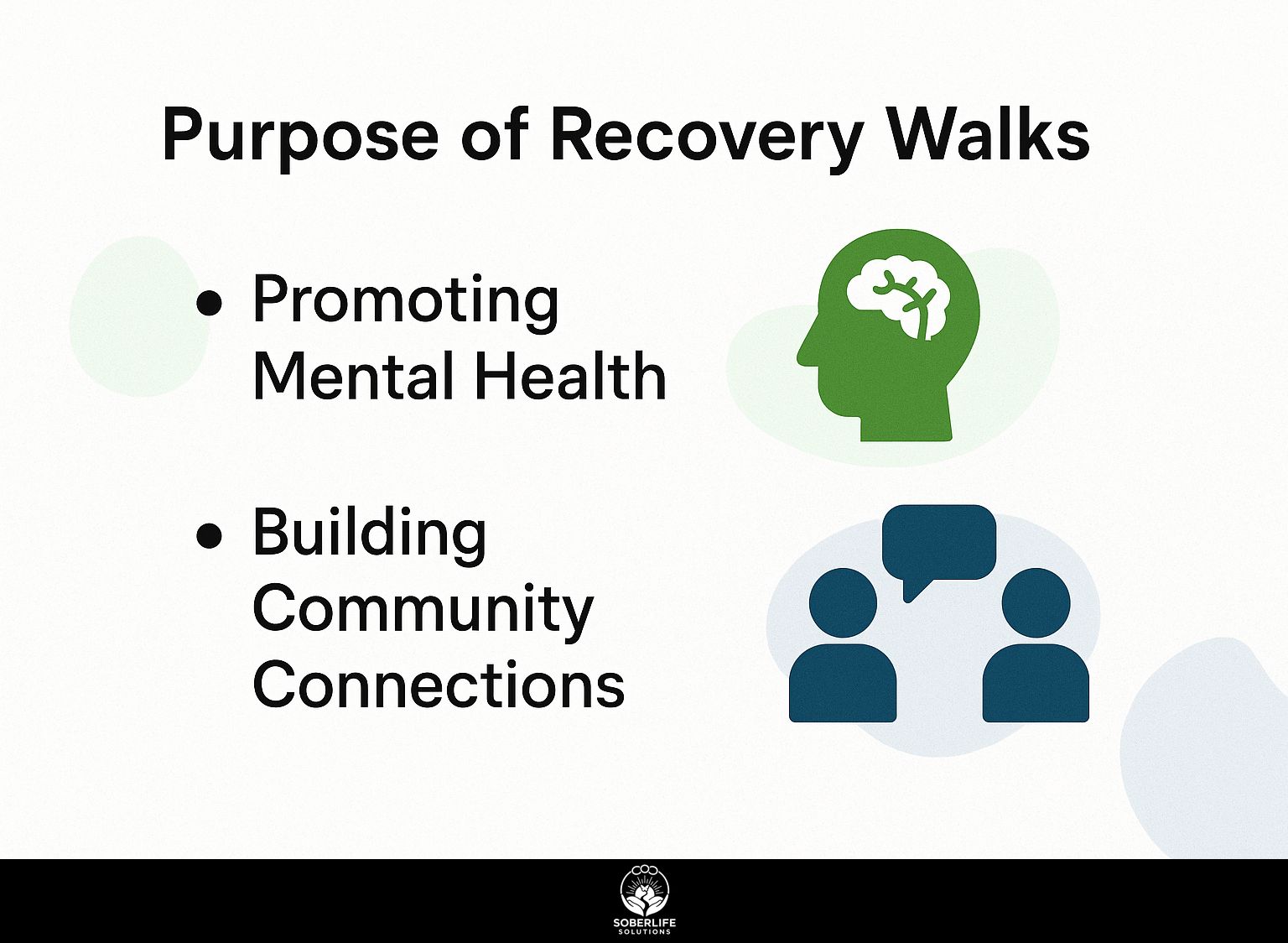
The main goal of Recovery Walks is to support mental health and build long-lasting community ties among those involved. To further enhance these objectives, it is beneficial to consider developing self-care habits in recovery, as they play a crucial role in solidifying personal well-being and community connections.
Promoting Mental Health
Recovery Walks focus on mental health awareness, highlighting the importance of emotional health in the recovery process.
These events bring people together and encourage them to share their stories, increasing self-confidence and reducing stigma.
Studies show that participants often experience significant mental health improvements, with 70% reporting reduced anxiety and depression symptoms after engaging in group activities.
Evidence-based treatment approaches, such as cognitive behavioral therapy (CBT) and peer support groups, can be accessed during these walks, offering attendees practical tools for ongoing recovery.
Recovery Walks connect physical exercise with mental health awareness.
Building Community Connections
The event helps people, families, and local groups build connections, strengthening the community’s support for those recovering.
Recovery Walks build a lively community where participants can connect with local support groups and mental health services.
For instance, local nonprofits often set up booths, providing resources and information on recovery programs.
Activities such as group discussions, wellness workshops, and resource-sharing sessions during the walk promote collaboration and friendship.
Participants can share their stories, strengthening their feeling of community and motivating others as they recover.
This shared experience builds personal support and makes the community stronger.
Activities Involved in Recovery Walks
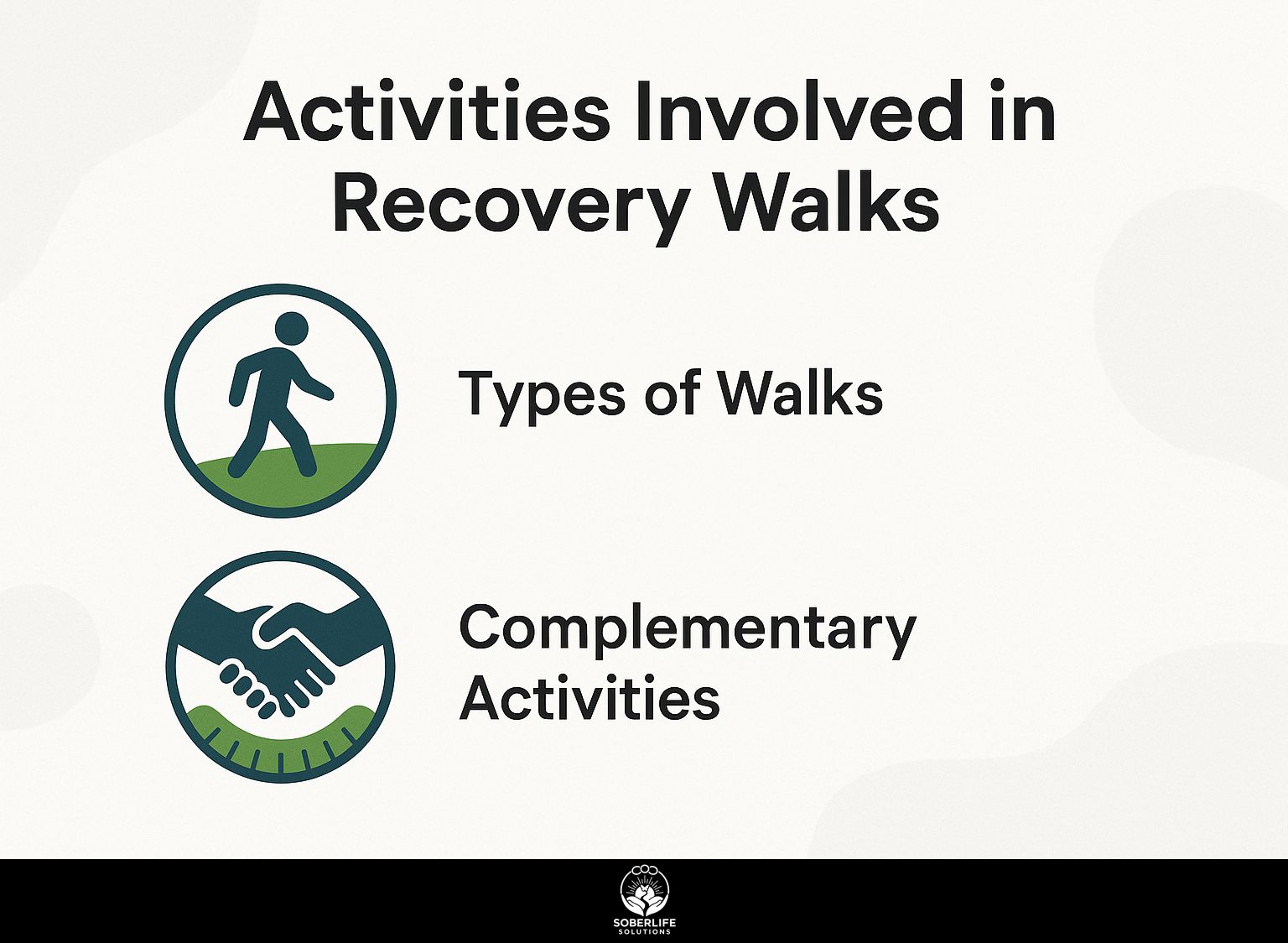
Recovery Walks include different activities meant to motivate, teach, and involve participants while honoring recovery. For those looking to deepen their understanding of the broader initiatives, participating in Recovery Month offers unique opportunities to connect with events like SAMHSA’s impactful programs and global celebrations. Discover more in our deep dive into the goals and global impact of Recovery Month.
Types of Walks
Different types of Recovery Walks serve different groups, from brief city walks to long charity events covering many miles.
Each walk emphasizes distinct aspects of recovery. For instance, the local Recovery Walk in Pittsburgh on September 20, 2025, will focus on community support and mental health awareness.
Participants can choose between a 3-mile scenic route through downtown or a 1-mile family-friendly option.
Nearby, similar events, like the annual National Recovery Month Walk, promote advocacy and education. When you participate in these walks, you can make friends and raise money for recovery programs, making it beneficial for everyone.
Complementary Activities
Along with walking, participants can engage in a range of complementary activities that further support recovery and community bonding.
These activities involve workshops on handling stress, health checks that give important information about health, and storytelling sessions where people talk about their personal experiences.
For instance, workshops might cover mindfulness techniques or nutrition, while health screenings could offer blood pressure checks and mental health assessments. To explore effective mindfulness practices, Mayo Clinic offers insights on mindfulness exercises that have been beneficial to many.
Attendees can access local health resources, including counseling services and support groups, during these events. This creates a caring environment that supports complete recovery.
Participation in Recovery Walks
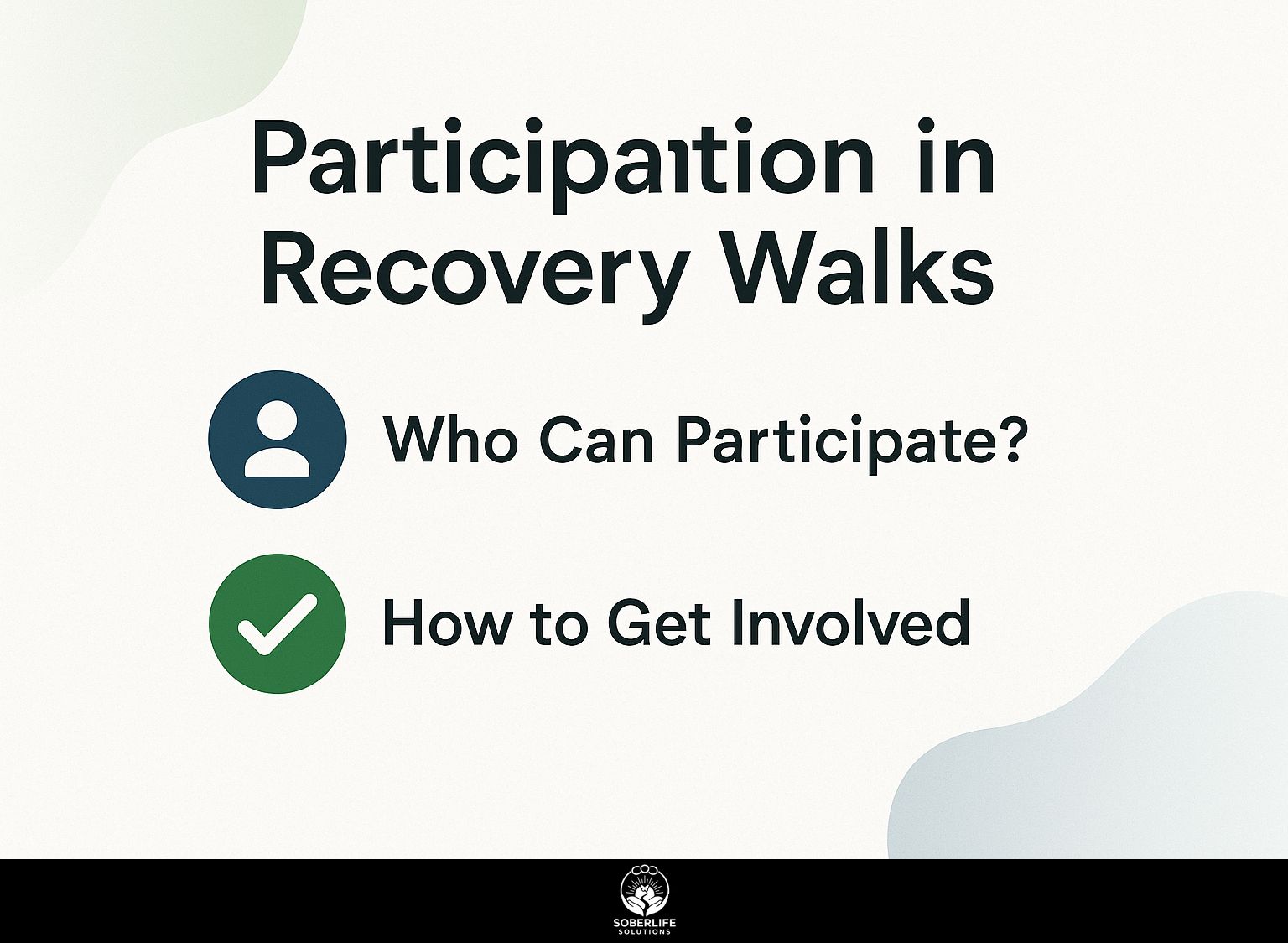
Recovery Walks invite many people, including those in recovery, their families, and community supporters, creating an open and friendly space for all. These events are often part of broader initiatives like National Recovery Month, a time dedicated to celebrating recovery efforts and raising awareness about the importance of support systems.
Who Can Participate?
Anyone can participate in Recovery Walks, including individuals in recovery, their families, friends, and community advocates.
These walks help create a community by giving participants a chance to tell their stories and help each other. Individuals in recovery gain motivation from seeing peers and building connections.
Families often look for connection and support, gaining from experiences they go through together. Friends can support by offering motivation and help during recovery.
Community advocates engage to raise awareness and promote resources. Together, they create a lively setting that focuses on both personal growth and the combined power of the recovery community.
Joining Recovery Walks is a powerful step towards healing for all involved.
How to Get Involved
Getting involved in Recovery Walks can be as simple as registering online or volunteering with local organizations supporting the event.
To register for Recovery Walks, visit their official website and complete the online form.
Volunteer opportunities are often available, where you can help with planning, promoting, and providing aid during events. Check local community boards or social media pages for specific details.
Using social media can increase your influence; post about your involvement using the event hashtags.
If you represent a business, consider sponsorship options that offer visibility while contributing to a great cause, enhancing both community support and brand recognition.
Impact of Recovery Walks
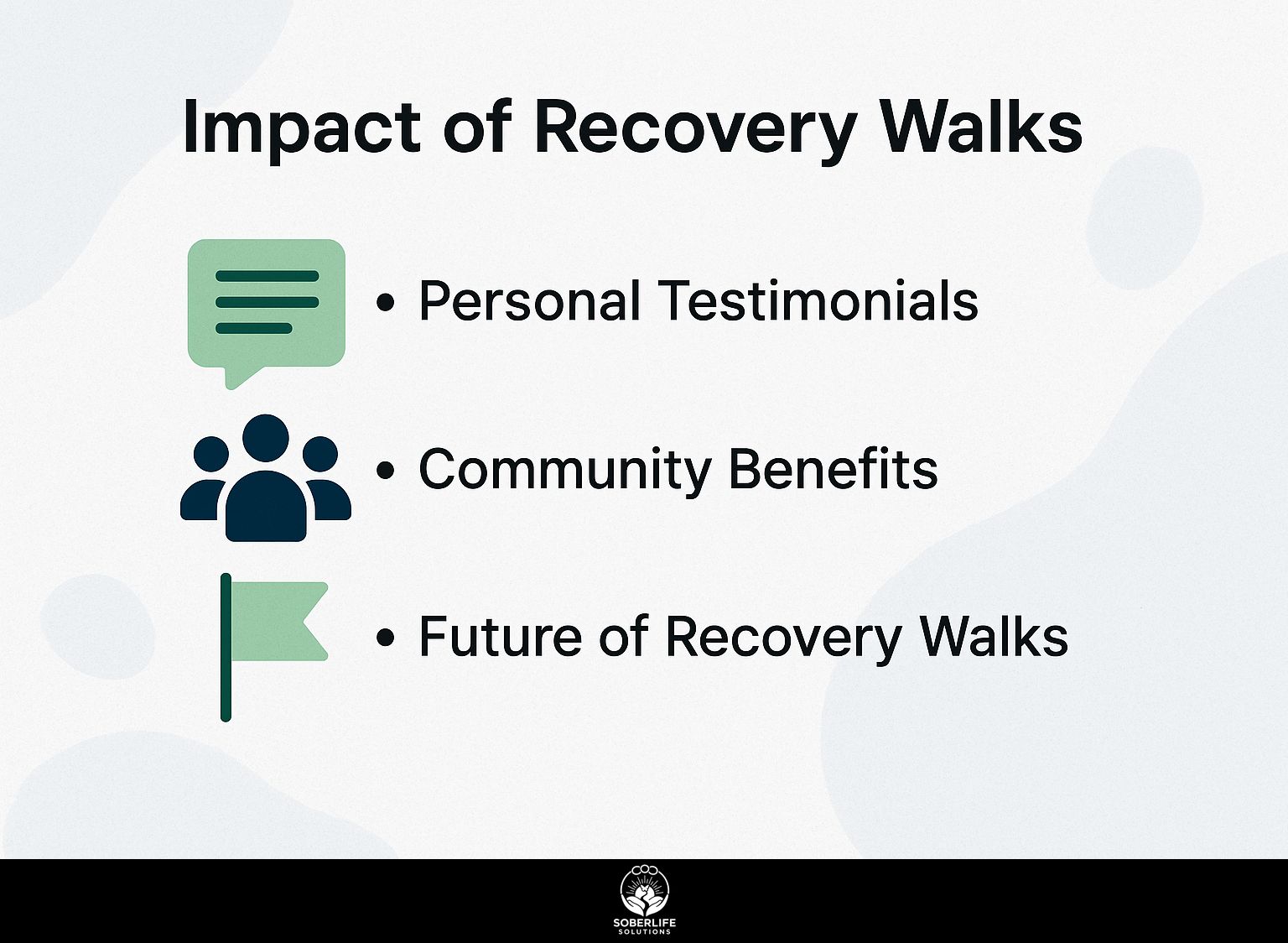
The effect of Recovery Walks is significant, shown by personal stories and clear benefits for the community that last well beyond the event. For those looking to enhance the journey further, exploring how to enhance recovery and vigor in AUD treatment can provide additional insights into sustaining long-term benefits.
Personal Testimonials
Participants often share powerful testimonials about how Recovery Walks have influenced their healing processes and strengthened their resolve.
One participant, Sarah, explained how joining the walk made her feel connectedSeeing so many others who have faced challenges like mine reminded me I’m not alone in this experience.”
Similarly, James noted, “The community support I felt was incredible; it pushed me to stay sober and committed to my recovery goals.”
These testimonials show how people improve individually and the value of having shared experiences in the group, emphasizing the combined strength in healing together.
Community Benefits
Recovery Walks help individuals and strengthen community connections and resources.
These events increase awareness of mental health resources and help build stronger connections within the community. For instance, partnering with local organizations can lead to workshops focusing on wellness practices or addiction recovery.
Recovery Walks encourage collaboration between community leaders and service providers, which often results in new recovery support initiatives, such as peer mentoring programs.
By being active in the community, these walks encourage people to talk openly about mental health and motivate those who need support to reach out for help and find resources.
Future of Recovery Walks
Recovery Walks has promising days ahead, focusing on including more people and using new ways to keep them involved.
Key projects use technology to improve outreach. For example, creating an easy-to-use app could make it simpler to sign up for events, monitor participant progress, and offer help for recovery.
Working with local businesses and healthcare providers could build a stronger support network. Starting workshops and mentorship programs organized by the community can help people connect with each other, creating a feeling of belonging and common goals.
These joint actions plan to involve more participants and make Recovery Walks better in the coming years.
Frequently Asked Questions
What is the purpose of recovery walks?
Recovery walks offer a friendly and helpful setting for people working on getting better to join in physical activity, which helps improve general wellness and mental health. These walks also serve as a way to reduce stigma around addiction and mental health issues.
What types of activities are involved in recovery walks?
Recovery walks can include a variety of activities such as walking, running, hiking, and yoga. These activities are chosen to accommodate individuals of all fitness levels and abilities. The goal is to engage in physical activity and promote a sense of community and overall well-being.
Who can participate in recovery walks?
Anyone in recovery from addiction or mental health issues, as well as their family members and supporters, are welcome to participate in recovery walks. These walks are open to people of all ages and fitness levels, and no prior experience is necessary. The only requirement is a willingness to support and be a part of the recovery community.
Are recovery walks only for individuals in recovery?
Everyone can join recovery walks, even if they are not in recovery. The purpose of these walks is to promote a supportive and inclusive environment for individuals in recovery and to reduce the stigma around addiction and mental health. Therefore, anyone who shares the same goals and values is welcome to join in the walks.
Can I start a recovery walk in my community?
Yes, anyone can start a recovery walk in their community. The key is to find a group of individuals who are passionate about promoting wellness and reducing stigma, and work together to organize and plan the walks. With determination and dedication, you can create a successful and supportive recovery walk in your own community.
Is there a cost to participate in recovery walks?
No, there is no cost to participate in recovery walks. These walks are free and open to all, with the intention of promoting wellness and reducing stigma. If the walk is organized by a group, there might be a small charge for administrative expenses, but it should not stop anyone from joining.

